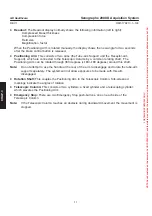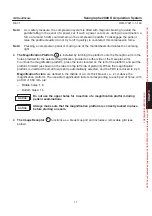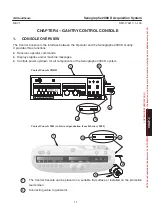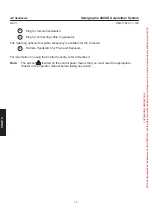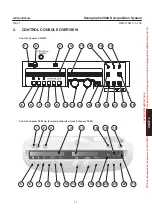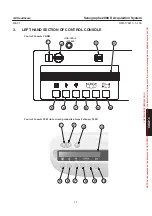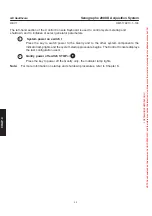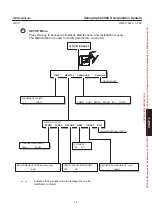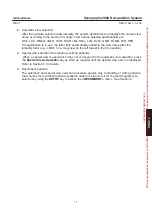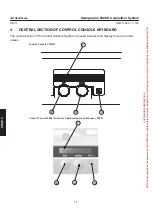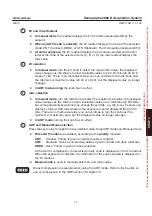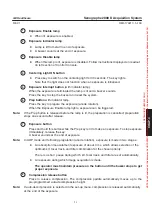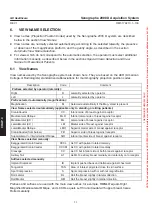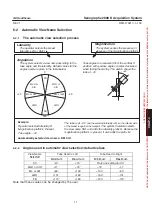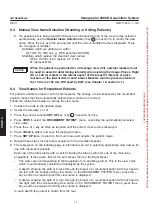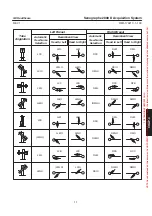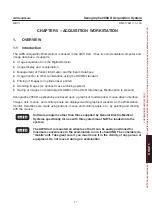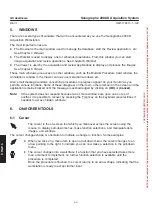
CHAP
. 4
GE Healthcare
Senographe 2000 D Acquisition System
REV 1
OM 5179217–1–100
46
Readout
The readout display comprises two 40-character lines.
D
The upper line displays information, safety, and error messages.
D
The lower line displays selected parameters: focal spot, focal track, filter, breast
laterality, view names, presence of magnification, and angle
Focal Spot selection
Small and large focal spot selection.
Note:
This selection is normally made automatically. By default, the system selects the large focal
spot when a standard exam is selected, and the small focal spot when magnification is
selected. The selection can be changed manually, but exposures are not possible when the
automatic setting is overridden.
D
Press the key to toggle between small or large focal spot (0.15 or 0.3, respectively).
D
The readout indicates the size of the selected focal spot.
Anode Track selection
Press the key to switch between the two anode tracks, molybdenum (Mo) and rhodium (Rh).
D
In Manual mode
, press the key to select the anode track.
The readout indicates the track selected.
D
In AOP (Automatic Optimization of Parameters) mode
, selection is automatic, and
pressing the key has no effect.
Filter selection
Press the key to switch between the two filters, molybdenum (Mo) and rhodium (Rh).
D
In Manual mode
, press the key to select the filter.
The readout indicates the filter selected.
Note:
Certain filter/anode track pairs are inhibited according to the selected kV value. The system
automatically selects an authorized filter and displays the selection.
D
In AOP mode,
filter selection is automatic, and pressing the key has no effect.
!
#
Breast Laterality
When acquiring an image, press the appropriate button to select the left or right breast..
Press the button
!
to indicate that a LEFT Breast is being imaged; or press the button
#
to
indicate that a RIGHT Breast is being imaged.
Note:
Selection of breast laterality (left or right breast) is mandatory. If laterality is not selected by
the operator, the exposure command is disabled.
"
Special Views selection (for standing or sitting patients)
View names are normally determined automatically; the view names used are based on the
ACR view name convention; see section 6 for more information. This key is used to modify the
view name if a special view is used.
FOR
TRAINING
PURPOSES
ONLY!
NOTE:
Once
downloaded,
this
document
is
UNCONTROLLED,
and
therefore
may
not
be
the
latest
revision.
Always
confirm
revision
status
against
a
validated
source
(ie
CDL).

